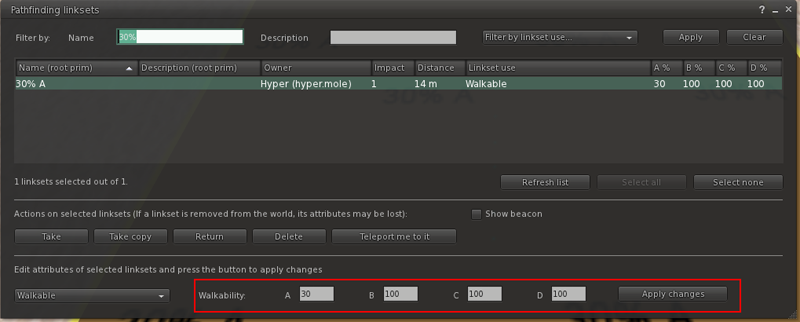Difference between revisions of "Walkability Coefficients"
Jump to navigation
Jump to search
Hyper Mole (talk | contribs) (Created page with "*Walkable objects can take advantage of coefficients in the navigation mesh. *Walkability coefficients are multipliers that may be applied to the speed of…") |
Hyper Mole (talk | contribs) |
||
| Line 3: | Line 3: | ||
*Some examples of use would be: Hard road switching to gravel, terrain switching to sandy ruts, deep snow areas, etc. | *Some examples of use would be: Hard road switching to gravel, terrain switching to sandy ruts, deep snow areas, etc. | ||
*You can have four different coefficients per region, controlling character type A, B, C, or D. | *You can have four different coefficients per region, controlling character type A, B, C, or D. | ||
*Coefficients can be mixed with [[Material_Volumes|Material Volumes]] to further control character speed. | |||
[[File:Coefficients_2.png|none|800x322px]] | [[File:Coefficients_2.png|none|800x322px]] | ||
Revision as of 13:09, 17 June 2012
- Walkable objects can take advantage of coefficients in the navigation mesh.
- Walkability coefficients are multipliers that may be applied to the speed of a pathfinding character.
- Some examples of use would be: Hard road switching to gravel, terrain switching to sandy ruts, deep snow areas, etc.
- You can have four different coefficients per region, controlling character type A, B, C, or D.
- Coefficients can be mixed with Material Volumes to further control character speed.
